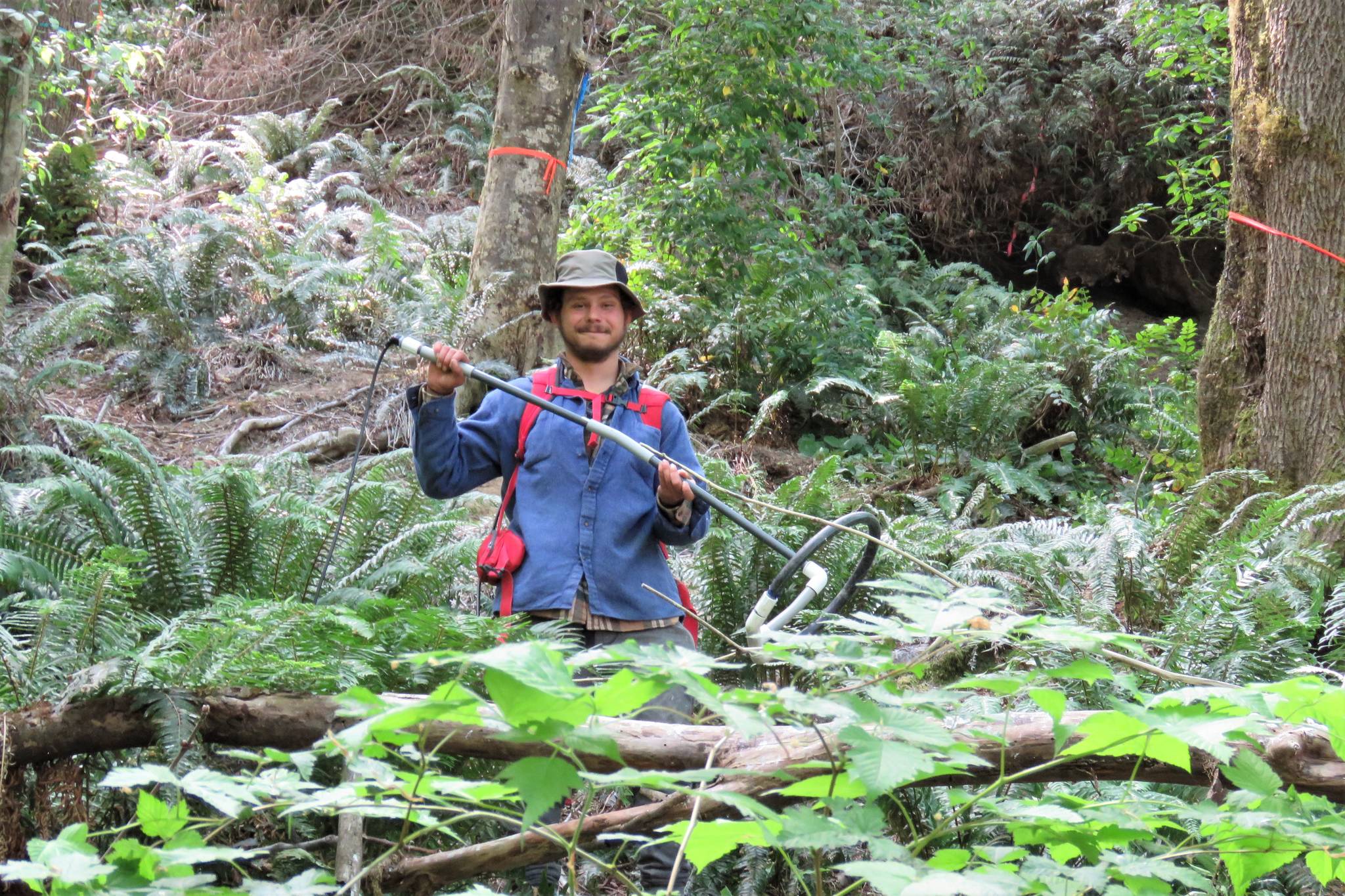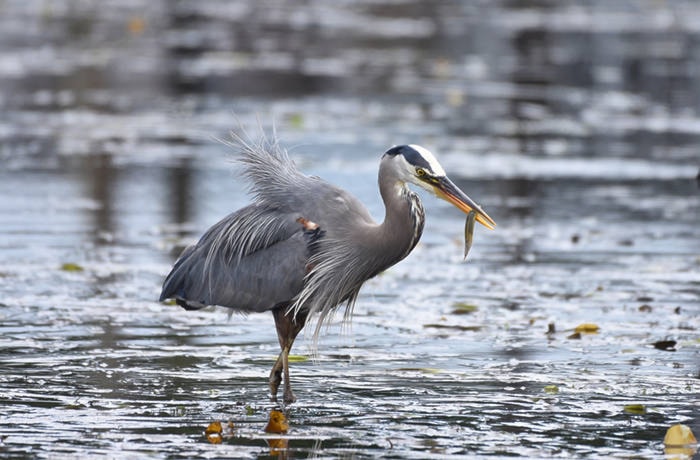It appears Pacific great blue herons have a much larger appetite for juvenile salmon than previously understood, potentially raising the complexity of salmon recovery strategies in B.C.
A new study out of UBC shows the birds are annually removing three per cent of the young fish heading to the Salish Sea. During years of low waterflows predation can shoot up to to six per cent.
sa���ʴ�ý�It doesnsa���ʴ�ý�t sound like a lot, but when yousa���ʴ�ý�re talking about millions of juvenile salmon moving out of these river systems into the Salish Sea, it adds up pretty quickly,sa���ʴ�ý� lead author, PhD student Zachary Sherker said.
sa���ʴ�ý�There is a study that showed reductions as low as five per cent can have a really significant impact on the overall recovery of salmon populations. But in this instance, it looks like the smaller juveniles are being preyed upon more heavily, and evidence suggests they have less chance of survival at sea sa���ʴ�ý� it could be they wouldnsa���ʴ�ý�t return as spawning adults anyway.sa���ʴ�ý�
READ MORE:
The study was part of Sherkersa���ʴ�ý�s mastersa���ʴ�ý�s research, published January in The Canadian Journal of Zoology. It is the first to quantify the portion of juvenile salmon preyed upon by heron in the southern streams. The findings suggest river-side heron rookeries need to be more closely monitored, with heron predation taken seriously for salmon recovery planning.
Knowing where and how juvenile salmon die has become an important scientific quest in B.C. amidst record-low salmon returns.
As juvenile swim to the ocean, about 50 per cent die from predation and damaged habitat. Sherker had set out to determine exactly how the fish were dying, looking for evidence from predators often linked to predation in Western scientific literature sa���ʴ�ý� raccoons, otters, king fishers and mink. On Vancouver Island he spent months raking the forest floor with a magnetic device, searching for scat containing tiny transponder tags that scientists years prior had implanted in the juvenile salmon to track their migration patterns.
After four months with zero results, he turned to the estuary expecting seals were responsible for the predation. Thatsa���ʴ�ý�s when a local Indigenous collaborator, Cowichan Tribes biologist Tim Kulchinsky, directed Sherkersa���ʴ�ý�s attention to numerous herons in their seasonal foraging ground at the riversa���ʴ�ý�s outflow.
In the heronsa���ʴ�ý�s fecal remains Sherker located 100 tags on the first day.
sa���ʴ�ý�The way it all came together is quite surprising,sa���ʴ�ý� Sherker said. sa���ʴ�ý�This is the first time wesa���ʴ�ý�ve been able to use this technology to peer into predation in the wild. Itsa���ʴ�ý�s evaded researchers prior to that.sa���ʴ�ý�
Blue herons are regularly seen near salmon habitat, but are rarely listed among known salmon predators. Identifying the heron as a prolific predator was problematic in the past, partly because their digestive tracts break down every part of the salmon, including bones. It was also assumed predators that rely on their vision target large, easy-to-spot prey.
Finding the tags in heron scat proved this assumption too simplistic, as Sherker concluded the heron are most likely hunting the smallest juveniles for their young.
sa���ʴ�ý�These are really important prey items for the chicks in the early weeks, when theysa���ʴ�ý�re still gape-limited and still have a high hazard of choking on larger fish,sa���ʴ�ý� Sherker said.
Over two summers of field research, Sherker had found 10,000 tags, one per cent of the total implanted in fish moving through the Cowichan, Big Qualicum and Capilano rivers. The finding suggests up to 8.4 per cent of the chickssa���ʴ�ý� diet consists of juvenile salmon, removing between three to six per cent of the fish from streams.
READ MORE:
Sherker said further studies are needed to pin down what this means for salmon abundance, but he is optimistic the predation may actually be beneficial.
sa���ʴ�ý�Herons may be taking out fish that were destined to die somewhere else along the way, but were going to live long enough to compete with other fish for potentially limited resources in the early marine environment. This predation could benefit salmon stocks by weeding out the weak and allowing for less competition and higher growth among other fish in these critical juvenile life stages.sa���ʴ�ý�
The study was completed in collaboration with the British Columbia Conservation Foundation and Cowichan Tribes, and was funded by the Pacific Salmon Foundation with support of a MITACS Accelerate grant.




